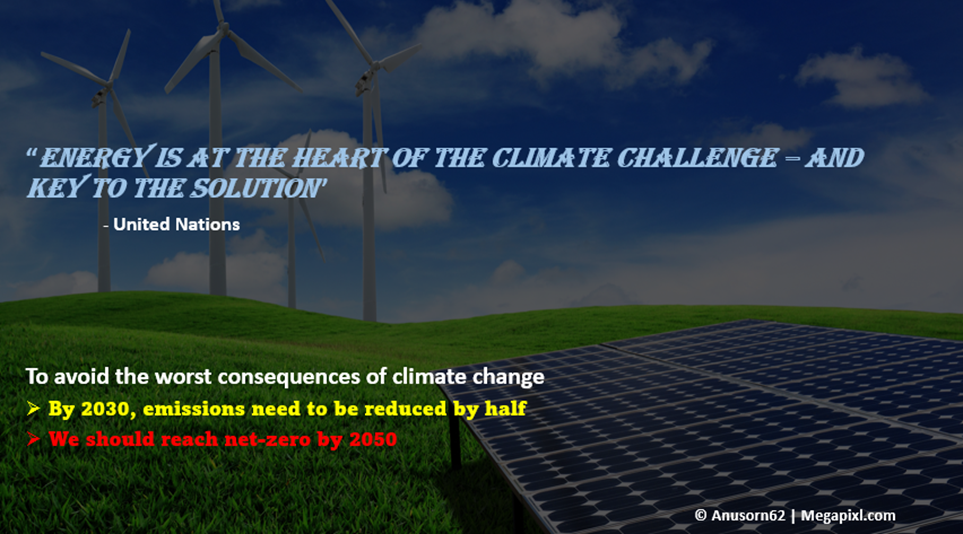Highlights
- Future of renewable energy seems unexceptionable on the when of global power slipperiness and surging fuel prices.
- There is zillions of renewable energy, which is pollution self-ruling and is eco-friendly.
- Currently, virtually 29% of renewable energy comes from renewable sources.
In a global scenario of power crisis and rising fuel prices, the future of renewable energy seems logically exciting. Energy production processes, such as urgent fossil fuels, contribute a huge share of the greenhouse gases.
About 90% of all stat dioxide emissions are caused due to fossil fuels such as oil, gas, and coal. Further, it is fueling global climate change by contributing to over 75% of greenhouse gas emissions.
All these facts undeniability for wearing our reliance on fossil fuels and investing in volitional sources of clean, affordable, sustainable, and reliable energy. Using renewable energy sources moreover reduces the dependency on fossil fuel imports. It enables in diversifying the economies of nations. Further, it shields them from the erratic changes in oil and gas prices, and promotes inclusive economic growth, job creation, and poverty eradication.
Renewable energy has started gaining traction as people wilt increasingly enlightened of climate change. The earth replenishes the wind, sun, water, waste with negligible or zero emission of greenhouse gases or pollutants. Currently, virtually 29% of renewable energy comes from renewable sources.

© 2022 Kalkine Media®
Here are five motives to show why switching to wipe energy is the resolution to develop a healthy and livable planet for today and the future.
- Abundance of renewable energy
Every country has plenty of renewable energy sources. However, they are underutilised, and their potential is yet to be harnessed. According to the International Renewable Energy Agency (IRENA), “90% of the world’s electricity can and should come from renewable energy by 2050.”
- Pollution-free and healthier options
According to reports from the World Health Organisation (WHO), environmental consequences such as air pollution, requirement over 13 million lives on a global understructure each year. The urgent of fossil fuels produces harmful levels of nitrogen dioxide and fine particulate matter.
A transition to wipe energy sources will solve not only the climate transpiration problem but moreover the health problems due to air pollution.
- Renewable energy is economic friendly
Creating sustainable and reliable renewable energy technologies could enhance flexibility and energy security by expanding power supply options. Lessening pollution and climate effects vacated could save the world nearly US$4.2 trillion annually by 2030.
Prospects of renewable energy
Sources of wipe energy are an economical option to fossil fuels. Currently, in major parts of the world, renewable energy is the most pocket-friendly power option. Following are the data supporting the fact:
- 85% reduction in the forfeit of solar energy between 2010 and 2020
- Electricity supply from renewable sources could decarbonise 90% of the power sector by 2050
- 56% ripen in forfeit of onshore wind energy
- 48% reduction in forfeit of offshore wind energy
- 65% of the world’s total electricity supply could be provided from renewable energy by 2030
Scenario from global leaders
Industry experts predict that the number of solar systems in the US will reach four million by 2023. In 2018, there were over one million solar panel installations in the UK, an increase of 2% from the previous year, and two million solar installations in Australia during that same year. The subtract in installation financing for the panels is a major factor in this increased acceptance.
As a result of the Fukushima nuclear disaster in 2011, Japan is experimenting with the notion of putting offshore turbines to replace many of its nuclear reactors.
Geothermal energy is moreover gaining popularity in a similar way. By 2024, the US geothermal heat pump market would be worth increasingly than US$2 billion due to the rising demand for energy-efficient heating options. New construction rules would promote the adoption of renewable electricity and heating technologies in both commercial and residential real estate.














